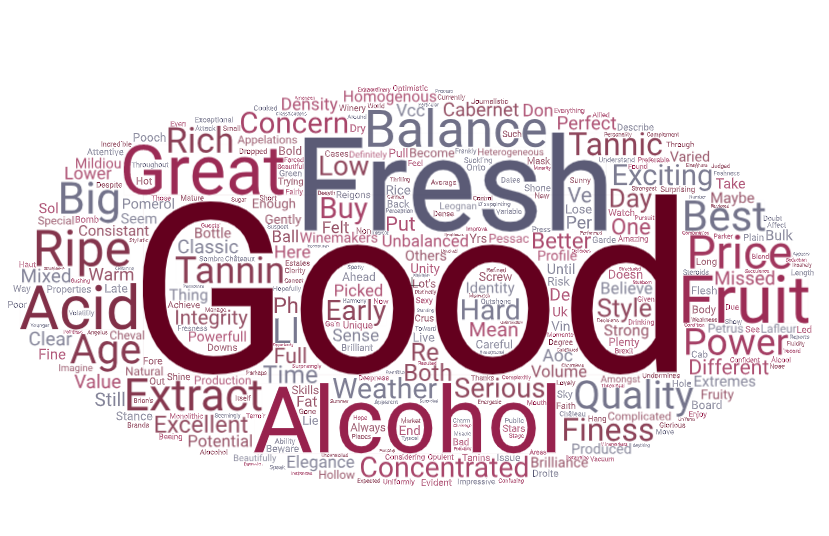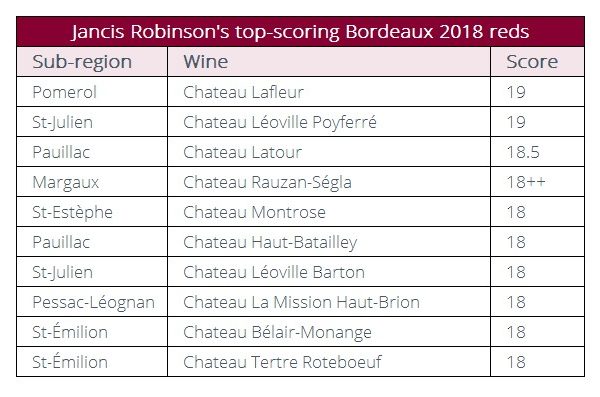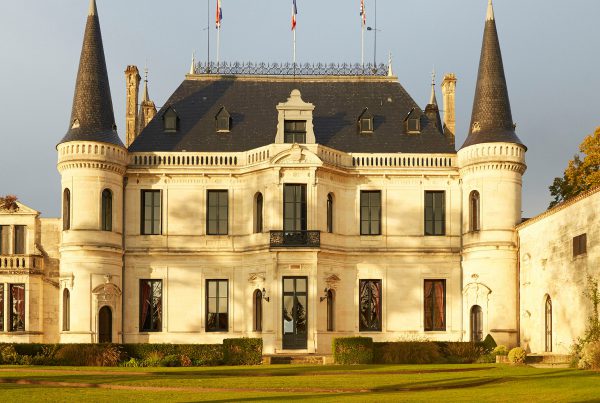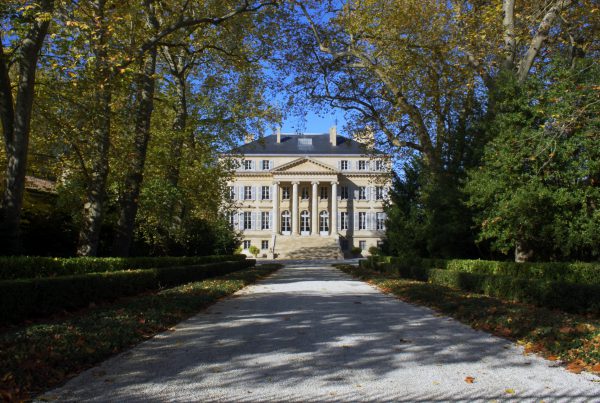Each year Liv-ex surveys the international wine trade upon their return from tasting the new Bordeaux vintage. The survey is designed to track the consensus of opinion among the best professional tasters of young Bordeaux. Liv-ex membership numbers 430 of the world’s biggest buyers and sellers of fine wine.
In summary, the findings of the Liv-ex 2018 En Primeur survey:
- Lafite Rothschild is the wine of the vintage
- Branaire Ducru tops the value for money category
- The vintage scored 95.5 points overall, slightly lower than the 2016 (95.9)
- 69% of merchants are expecting more demand than the 2017 campaign, although many said this depended on price
- Ex-negociant prices are expected (not wanted) to be 15.6% higher than last year, but 4.8% lower than 2016, on average.
And the results in full:
List in order of preference your top five wines of Bordeaux 2018:

The results above show the top ten wines of the vintage according to the experts irrespective of price. Wines ranked number one by respondents were awarded ten points, second were given five points, third three, fourth two and fifth one.
Overall, Lafite Rothschild was voted wine of the vintage, appearing in 17% of respondents’ number one picks. Cheval Blanc came in second place – 45% of respondents selected the wine as one of their top five favourites.
List in order of preference your top five value wines from 2018 (value wines are wines with an expected release price of less than £600 per case):

The merchants’ favourite ten wines expected to be released at under £600 per case were ranked as above. This year, Branaire Ducru took first place, knocking Grand Puy Lacoste off the top spot for the first time in 8 years.
In total, 121 different wines were mentioned in answer to this question.
List your five most disappointing wines of the vintage with the most disappointing first:
Once again, the trade was heavily divided on the most disappointing wines of 2018, with a variety of wines from all major appellations listed. A number of wines listed in the merchants’ table of top wines were also mentioned frequently among their most disappointing.
In total, 179 different wines were mentioned in answer to this question. By way of comparison, 169 were mentioned in our survey of the 2017 vintage and 136 for the 2016, perhaps suggesting a lack of consistency for the 2018s.
Using the Parker scoring model, what score would you give the 2018 vintage overall?

Liv-ex members awarded the 2018 vintage 95.5 points (out of 100), placing it just below the 2010, 2009, 2016 vintages, but just above the 2015.
Does it compare to any previous vintage you have tasted?

26% of members compared this year’s vintage to 2016, while 22% said it was unlike any other previous vintage. Some compared it to 2009 and 2010. Other results included 2015, 2003 and 2005.
Considering only the First Growths, please rank 2010, 2015, 2016, 2017 and 2018 in terms of quality:

50% of Liv-ex members ranked the 2016 vintage as the best quality vintage for First Growths. The 2010 vintage came second with 36% of respondents selecting it as their first choice and 46% picking it second. The consensus was that 2017 was the worst vintage, with 97% of respondents selecting it as their 5th choice.
At this early stage, what level of demand (by volume) are you expecting for the 2018 campaign?

Unsurprisingly, merchants are anticipating more demand for the 2018 vintage than the 2017 campaign. However, almost all merchants qualified this by commenting that their answer very much depends on prices. One respondent commented that it “all depends on price. There needs to be margin in it for the customer”.
At what prices, in Euros per bottle, ex-negociant, do you expect (not want!) the following wines to be released in Bordeaux?

To keep our members focused we are offering a jeroboam of Beaucastel 2010 to the individual who comes closest to estimating the correct opening prices for the basket of wines listed above, which we keep the same from year to year.
The results suggest that merchants expect (not want) the wines to be released 15.61% higher than the 2017s were on average, but 4.85% lower than the 2016s.
Briefly, how would you describe Bordeaux 2018?
Responses to this question were very mixed. One merchant said that there was an “unusual combination of freshness and power”, while another said that “some estates produced their best wine ever”.
On the whole, merchants believed that the vintage was “not as homogenous as press reports suggested” with many adding that the vintage was “more mixed than expected”. One respondent said there were “some great wines, some cooked wines [and] some green wines. Confusing”.
Many also commented that the alcohol levels were of concern, with one suggesting that “the high pH is an issue to watch. The wines could lose their early freshness”.
Another said that “not all the wines are as uniformly brilliant as per 2010 or 2016. But where the wines are good, they are seriously good indeed”. Many agreed that “it was a vintage where the best winemaking skills shone”, with one adding that it was a “vintage that was made. It didn’t make itself. Great vintages make themselves”.
The last few years have also seen prices at the forefront of respondents’ minds. One merchant said that “the concern is now the price – a big opportunity after the complicated 2017 but faith needs to be restored especially with the UK market with the Brexit coming”
The image below shows the words used by Liv-ex members to describe Bordeaux 2018. The image gives greater prominence to words that appear more frequently. For example, many respondents said the vintage was ‘good’ and ‘fresh’, but ‘alcohol’ was a concern of many.




